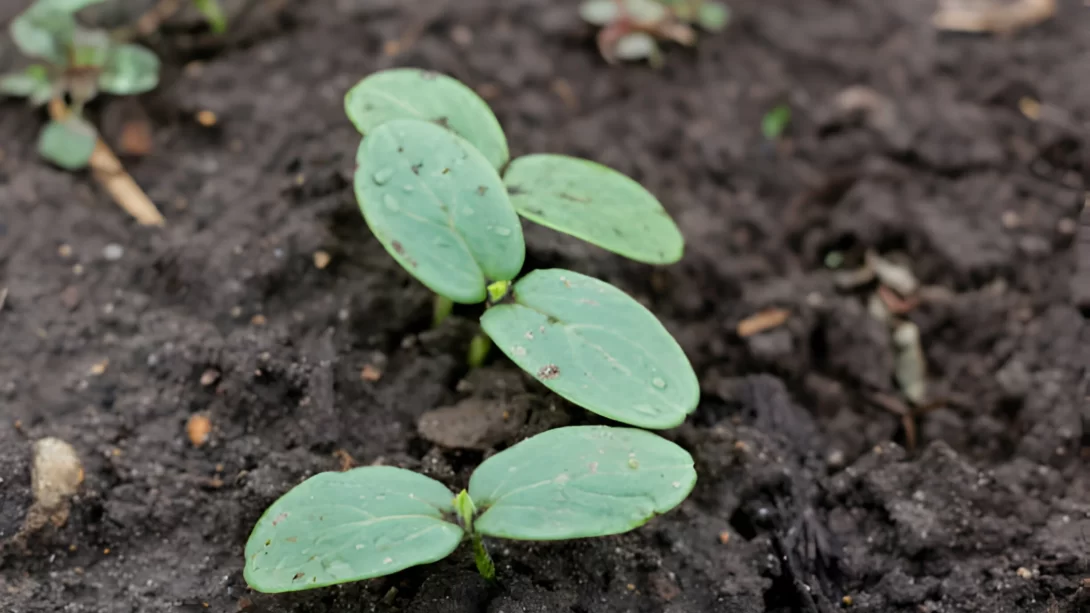Cucumbers are a popular vegetable in gardens around the world, known for their crisp texture and refreshing taste. Recognizing cucumber sprouts is crucial for gardeners, as early identification can help in proper care and cultivation. This article aims to describe what cucumber sprouts look like, enabling gardeners to distinguish them from other sprouts in the garden.
The Germination Process of Cucumber Seeds
Cucumber seeds typically germinate within 3 to 10 days after planting, depending on soil temperature and moisture conditions. Germination begins with the swelling of the seed as it absorbs water, followed by the emergence of the radicle (root) and the cotyledons (seed leaves). Understanding this process can help gardeners anticipate what to look for in the early stages of cucumber growth.
Identifying Cucumber Sprouts
Identifying cucumber sprouts involves observing specific characteristics in their early growth stages. Here’s what to look for:
Cotyledons (Seed Leaves)
- The first visible sign of a germinating cucumber seed is the emergence of cotyledons. These are the initial leaves that sprout from the seed and are typically oval or round in shape.
- Cotyledons are generally smooth-edged and may appear slightly thicker than true leaves. They serve as energy sources for the sprout, emerging before the true leaves develop.
- In cucumber plants, cotyledons are usually bright green and can be quite sizable compared to those of other plants, making them relatively easy to identify.
True Leaves
- Following the cotyledons, the first true leaves begin to develop. These differ in appearance from the cotyledons.
- True leaves of cucumber sprouts are more elongated and may show the characteristic cucumber leaf shape, which includes a pointed tip and a slightly serrated edge.
- The color of true leaves is a vibrant green, similar to the cotyledons, but their texture and structure are more indicative of typical cucumber foliage.
Common Mistakes in Identifying Cucumber Sprouts
When identifying cucumber sprouts, it’s easy to confuse them with sprouts of other plants, particularly those in the Cucurbitaceae family, such as squash and melons. Here are some common mistakes and tips to avoid them:
- Confusing with Squash or Melon Sprouts: Squash and melon sprouts can look similar to cucumber sprouts, especially in the cotyledon stage. Pay attention to the shape and texture of the true leaves, as these provide more distinctive identifiers.
- Overlooking the True Leaves: Relying solely on the appearance of cotyledons can lead to misidentification. Observe the plant until the true leaves develop for a more accurate identification.
- Misidentifying Weeds: Sometimes, weeds can sprout alongside planted seeds. Regular monitoring and knowledge of common garden weeds can help differentiate between cucumber sprouts and unwanted plants.
Care Tips for Cucumber Sprouts
Proper care is essential for the healthy growth of cucumber sprouts. Here are some basic tips:
- Watering: Cucumber sprouts need consistent moisture to thrive. Water them regularly, keeping the soil moist but not waterlogged.
- Temperature: Cucumbers prefer warm conditions. Ensure that the sprouts are not exposed to cold temperatures or frost, which can hinder their growth.
- Sunlight: Provide ample sunlight, as cucumbers need full sun to develop properly. If starting seeds indoors, use grow lights to ensure they receive enough light.
- Soil: Plant cucumber sprouts in well-draining soil rich in organic matter. This provides the nutrients necessary for growth and reduces the risk of root diseases.
Careful attention to these factors will help ensure that cucumber sprouts grow into healthy, productive plants.
Conclusion
Recognizing cucumber sprouts is an important skill for any gardener, especially those keen on growing this popular vegetable. The key lies in observing the distinct characteristics of the cotyledons and the true leaves. Cotyledons are typically round and thick, providing the initial nutrients for the sprout, while the true leaves are more elongated with a pointed tip and serrated edges, indicative of mature cucumber foliage.
It’s crucial to distinguish cucumber sprouts from similar-looking sprouts, such as those of squash or melons, and to differentiate them from common garden weeds. Accurate identification ensures that the plants receive the appropriate care they need to thrive.
Caring for cucumber sprouts involves maintaining a balance of regular watering, warm temperatures, ample sunlight, and nutrient-rich soil. These conditions support the healthy growth of cucumber plants, leading them to produce the crisp, refreshing fruits enjoyed by many.
In conclusion, the process of growing cucumbers, starting from the sprout stage, is both rewarding and educational. It offers gardeners the opportunity to observe the fascinating early stages of plant development and to nurture these plants through to fruition. With the right care and attention, those tiny sprouts will transform into bountiful cucumber plants, providing a satisfying addition to any garden or outdoor space.




